In the second of a series of follow-up articles to The Quality of Light, I have posted this article to share a series of photographs (along with the thought processes behind them) that captures the quintessence of a well-known and spectacular light display, often referred to as the ‘Second Sunset’. As with many of my previous articles, my goal with this post is to encourage my fellow photographers to be inspired by light, composition, and mood, to spur them to explore their creative potential, and to get out and make beautiful photographs.
One of the many joys of photographing under the light of the Second Sunset is that the light will nearly always be different. Different in terms of the highlights, shadows, colors, mood, cloud patterns, and interpretations. Thus, if the conditions are right the photographer may be in the enviable position to potentially create a unique work of art. It is these considerations and rewards that inspire me as an artist to gravitate to this quality of light.
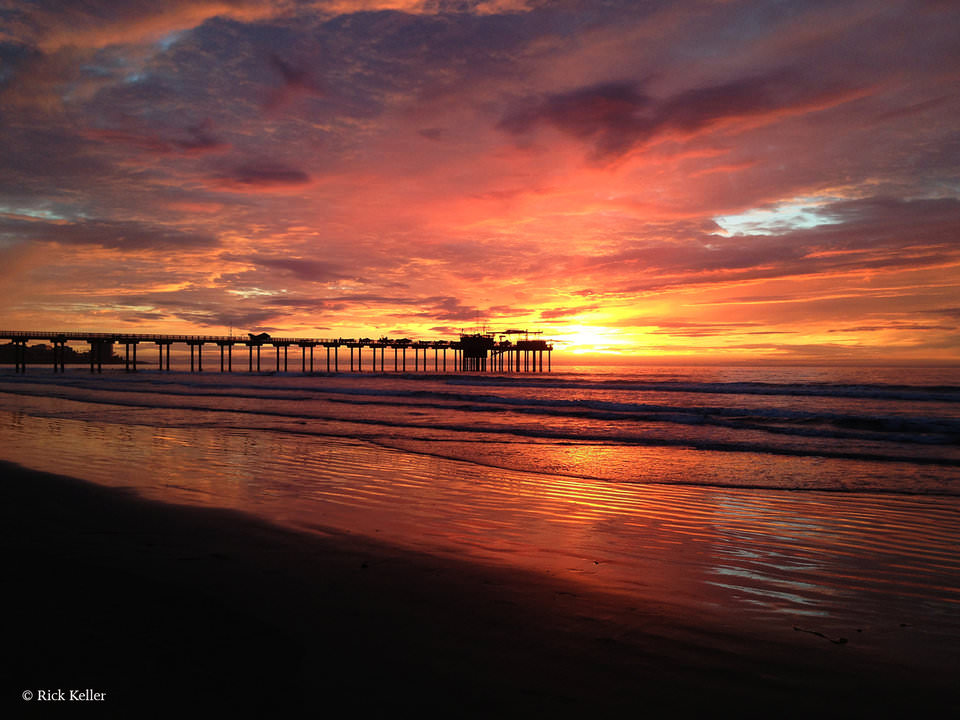
So, what is the Second Sunset? And how does the photographer know if and when it will materialize?
What is the Second Sunset?
As many photographers, nature lovers, and non-photographers have come to enjoy and appreciate, the Second Sunset is the burst of light that fills the sky and clouds with vibrant and warm colors after the sun sets below the horizon, typically starting around 15 minutes after sunset, sometimes sooner, sometimes a little longer. The vibrant glow of crimson and orange may give way to an equally vibrant magenta mixed with the deep blues of the evening skies at the transition to dusk. However, the Second Sunset may not always materialize, which may disappoint even the most patient of scenic photographers. Trust me, I have gone out in search of this light with high hopes and expectations only to return home empty-handed more times than I care to remember. Whether the Second Sunset will materialize depends on a plethora of factors, including the season of the year, the geographic location, the prevailing cloud cover, and even on the amount of particulate matter in the atmosphere. The physics of sunsets is an interesting and complex topic, but the time-honored principle, Rayleigh scattering, explains how the sky is enriched with warm colors at sunset.
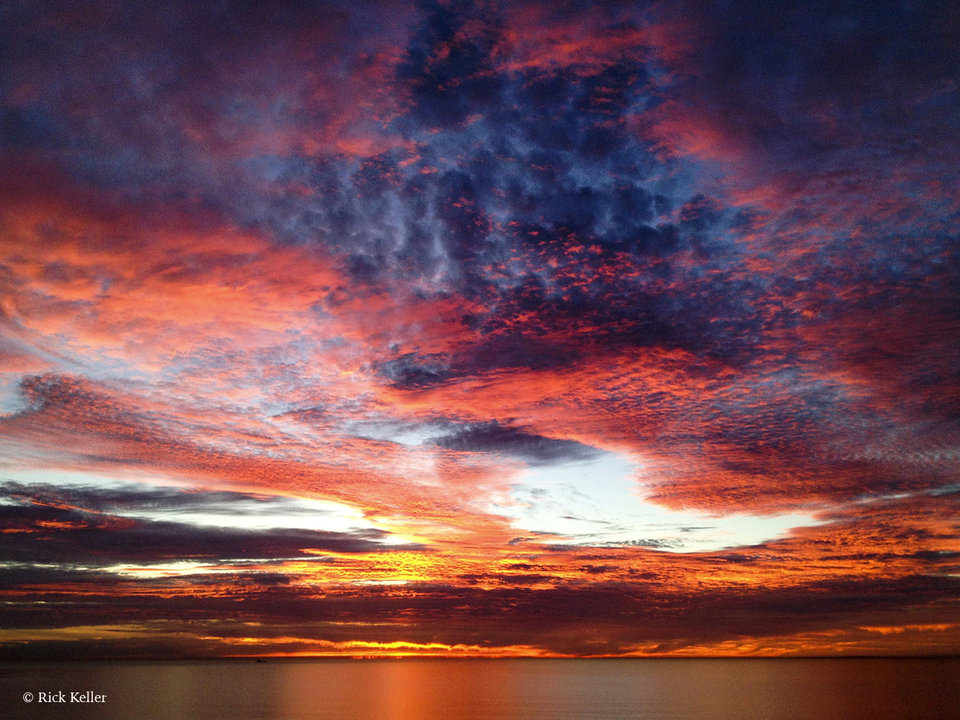
Based on my experiences with this light, the prevailing cloud cover has reigned supreme among these factors. Having lived in coastal Southern California for the last several years, I have found that in the early winter months (December and January) the quality of light is more exquisite and the chances of witnessing the Second Sunset are enhanced compared to other seasons, but I have seen exceptions. Although I have not had as many opportunities to photograph the Second Sunset inland, in my humble opinion the quality of light along the West Coast of the US during the winter at sunset is special and something to behold.
On the one hand, excessive cloud cover may actually suppress the Second Sunset, especially with dense overcast skies over the horizon. On the other hand, certain patterns of less dense cloud cover may serve as the clue that a special light display will declare itself shortly after sunset. When certain patterns of clouds are present early in the day, the intuitive photographer knows there may be a good chance that Nature will deliver a spectacular light display at sunset. This observation is purely empiric, anecdotal, and difficult to explain, but I hope many of my fellow scenic photographers can identify. Excess water vapor in the sky, as from a recent rainstorm, or particulate matter from pollution in the skies, may confer a higher chance that the Second Sunset may materialize.
By its very nature, the quality of light from the Second Sunset will most often be of the backlighting variety with strong highlights, deep shadows, and stark contrast. Depending on how the photographer crafts the composition and makes the exposure, the silhouette effect may be a prominent element of the composition. From an aesthetic standpoint, the quality of this light is well-known to be associated with a burst of vibrant colors, including crimson, orange, gold, pink, and magenta. Depending on the prevailing cloud cover, the light, and the timing of the exposure, the potential exists for making an image that captures the deep blues of the night sky, which may provide a pleasing contrast with the warmer colors. The compositions may range from landscapes to seascapes to the clouds or the light itself. One aspect of seascapes that resonates with many scenic photographers (myself included) is the potential for capturing the reflections of the brilliant colors of the sky from the ocean.
Because of the diversity in artistic visions and innumerable possibilities for crafting a composition from this light display, I am delighted to have reached out to our photography community to elicit contributions for this article to share their vision and interpretations of their work on this subject.
Consider this following image from a brilliant artist and travel photographer, Mr. Dan Ballard, entitled “Sounds of Milford”, which beautifully captures the quintessence and emotion of the Second Sunset:
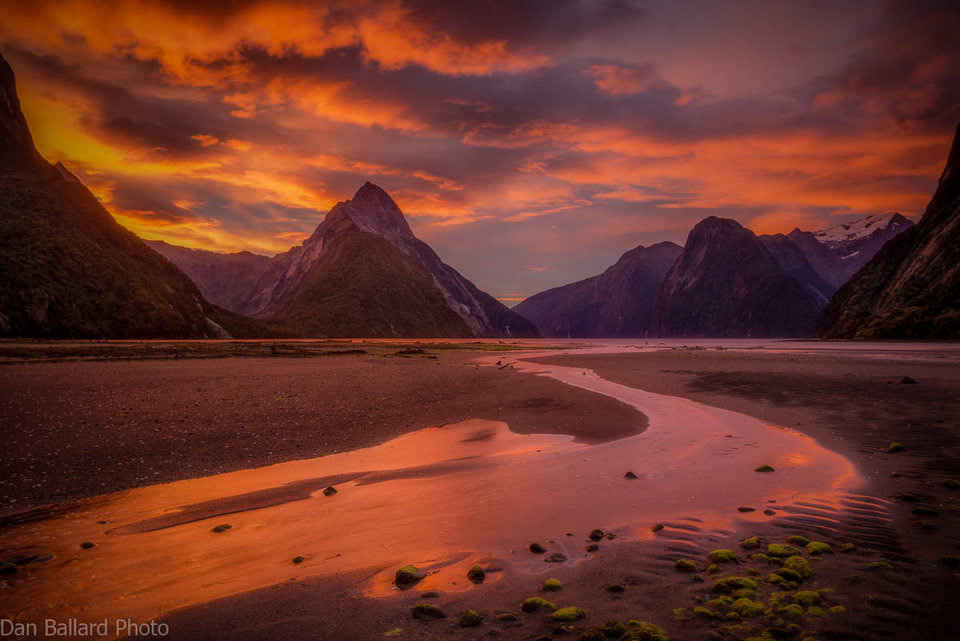
Reproduced with the expressed written consent of Dan Ballard
Getting the timing right is everything. In this case my client and I planned our entire trip to New Zealand around this image. There are only a couple of times each month where the tide is low at both sunrise and sunset. We made sure that we were at Milford during one of those times, and man did we get lucky! Being in the area at low tide gives you countless options in terms of foregrounds, and we spent the day before this image was taken scouting and looking for possible shots.
I really tried hard to lead the eye through this image and create balance. I loved the receding tide pulling the eye in and the small green moss-covered rocks balancing out the peak in the distance. I made sure to lag the shutter a bit to get some movement in the water to keep it simple.
As a pro photographer, I spend a big part of my life waiting for epic light and when it finally happens it is such an amazing feeling. This was one of the best light shows that I have ever seen while shooting in an awesome location.Dan Ballard
Next, we have this stunning seascape by the talented Talha Najeeb, also a guest contributor for Photography Life in 2017, which equally captures the radiance, colors, and emotion at the Second Sunset:
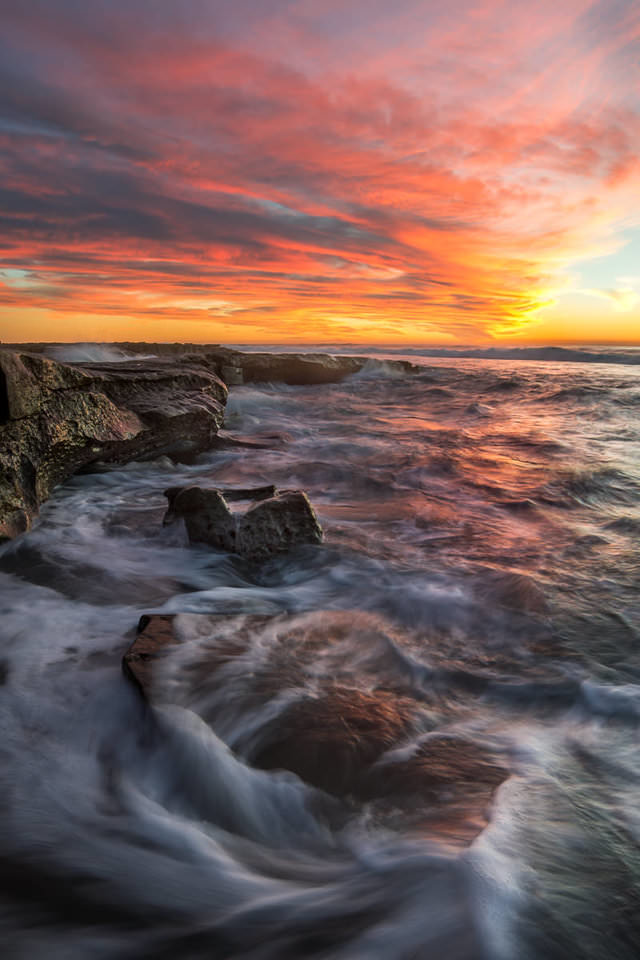
Reproduced with the expressed written consent of Talha Najeeb
The one word I would use to describe my emotions at the time I captured this shot is ‘frenzy’. Let me explain: cloudy sunsets in San Diego, California are rare with the exception of late December, when some magical confluence of the elements consistently produces flaming skies. The problem is that if this phenomenon happens on a weekday, the timing of the sunset coincides with rush hour. That happened to be the case on the day I took the shot. Leaving work, I knew from looking at the sky that something special was in the works. Since I usually pack my camera in my car on such days, I made straight for the ocean. Almost immediately, I found myself stuck in bumper-to-bumper traffic. As the car crawled forward, I kept nervously glancing at my watch as well as the sky, knowing that this could go either way. Fast forward, I made it to the beach just as the sun was setting. Since my plan was to capture the ‘second sunset’, I had a solid 15-20 minutes to set up. Gear in hand, I ran to the beach only to find it swamped with photographers. Every good spot was taken. I ran up and down the beach, looking for any openings. That’s when I realized that my best option was to go into the water. I saw the potential of the composition in this shot and went for it, setting up my gear in water that was knee-deep at times. The second sunset was now underway. All around me, photographers were clicking away, adding to my sense of urgency. I had very little time to get my depth-of-field and exposure right, while constantly protecting my lens against splashes from incoming waves. Somehow, in all that frenzy, I managed to fire off about 20 good exposures. From the previews in my camera, I could see that I had done justice to the scene unfolding before me. For a second, I paused, relaxed and took a breath. ‘This will be good’, I told myself…Talha Najeeb
This beautiful and surreal sunset from the talented Ms. Nica Fieger entitled ‘A Jamaican Sunset’, not only captures the vibrant explosion of color in the sky but also its reflections in the water. The ethereal appearance of the clouds and the silhouetted isle convey a beautiful emotion as well as the quintessence of the intersection of light, land, and sea.
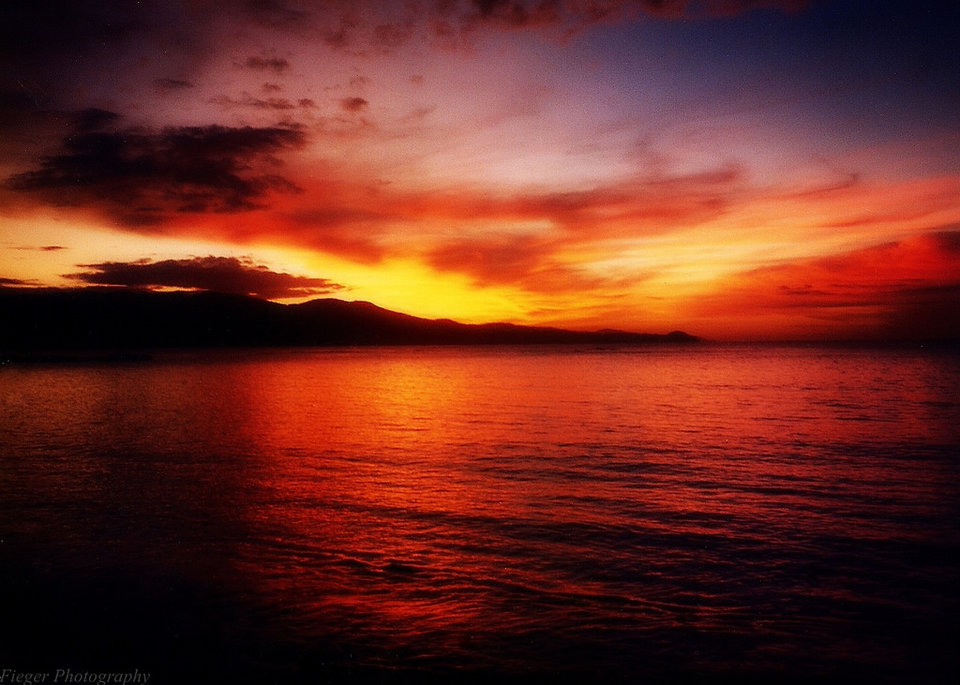
Reproduced with the expressed written consent of Nica Fieger
This photo was taken while standing on a warm sandy beach in Jamaica. This was captured back in 1989 with a simple point and shoot film camera, using a film speed of 400 ASA. The colors of that evening in the sky would surely captivate one’s curiosity. This sunset opened my eyes to the grandeur of Nature and all her beauty. I can remember the layers of vivid colours, reflecting gloriously off the Jamaican sea water. Soothing and warm yet invigorating, it opened the senses and made you feel alive.
Although I captured this moment before I picked up a passion for photography. I did (at the time) ponder the idea of… How wonderful it would be to have a life spent ‘capturing’ Nature’s beauty and all her endless allures. Never did I think all those years ago… That, that would be the very passion I would seek and find, in my life today.Nica Fieger
Nasim also wrote an article a few years back on the importance of sticking around after sunset, where he described in detail the circumstances of the second sunset and the resulting high resolution panorama image he was able to obtain.
For the aforementioned reasons, much of my personal art work encompassing the Second Sunset revolves around seascapes, mostly during the fall and winter months where (in my humble opinion) the quality and radiance of light at sunset are special. For pictorial effect and style, I enjoy making use of the silhouette effect to create foreground interest and contrast between the deep shadows and the strong highlights. When complex cloud formations are present, I relish their appearance when they ‘catch fire’, creating a surreal appearance and emotion, not unlike that captured in the above images. In particular, I enjoy photographing coastal sunsets because of their uncanny ability to stimulate the senses across the board, as in the visual captivation from the light, the sound of the crashing shore, the smell of brine, and the feel of the cold air. I have found that this sensory experience augments the emotion of the scene and brings me, as a photographer and artist, that much closer to consummating the visualization process.
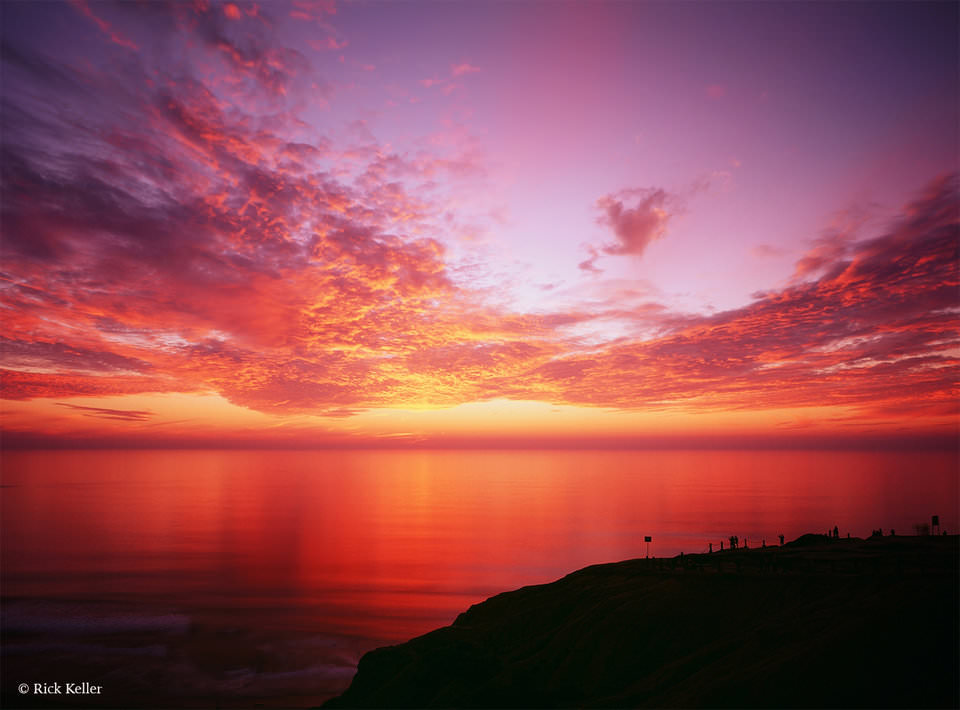
Note the color palette of crimson, orange, and magenta, the reflections, and the silhouette
From an aesthetic and technical standpoint, one of the most enjoyable tools that I use to photograph the Second Sunset has been Fujichrome Velvia 50 color slide film, which has been and continues to be a cherished tool for landscape photographers. Beyond the legendary high color saturation, the unique color palette, and high contrast inherent to this film, there is just something special about the true-to-life and emotional experience of viewing vibrant colors on a light table. It is as if you are meeting your first love . . .
Consider this next photograph that I had made at breathtaking Torrey Pines State Natural Reserve in San Diego, CA, where I visualized warm colors and strong contrast created by the backlighting and the prominent silhouetted pines in the foreground. The burst of color, the scent of pine, and the distant breaking waves all intersected to create a surreal mood and experience.
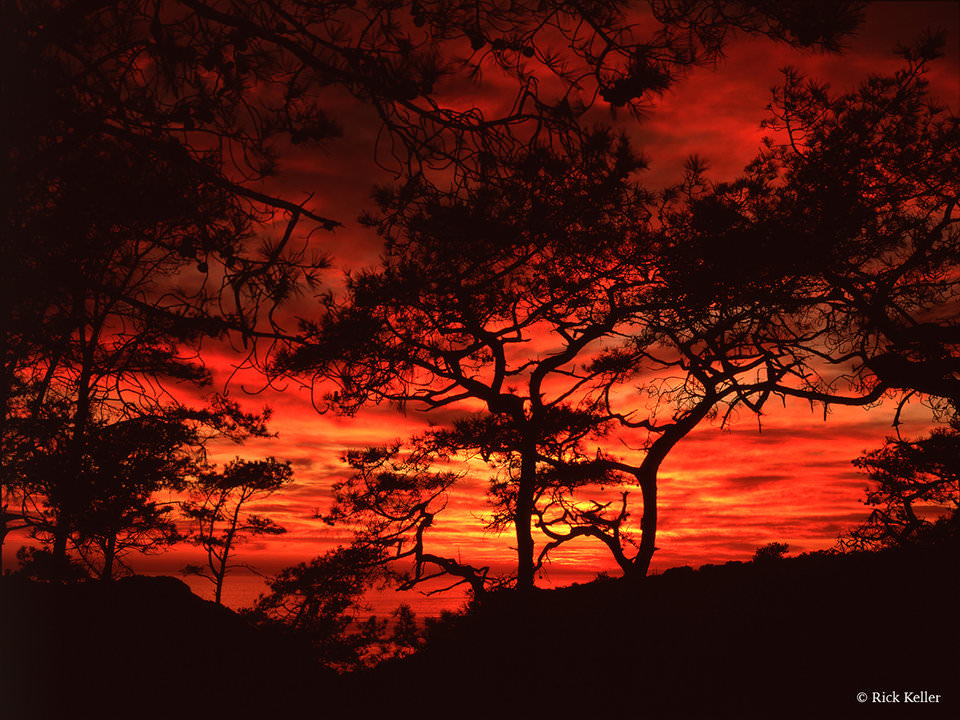
In addition to using Velvia 50 to capture saturated and vibrant colors, I enjoy making use of strong warming filters, such as the 85C, to lower the color temperature of the light to augment the warmth of the scene.
For this next image that I had made in my beloved La Jolla, CA, I was inspired by the exquisite cloud cover and quality of light on a mid-December evening along coastal California. After 10 weeks of nary a cloud in the skies at sunset, a rainstorm had swept through earlier in the week. Judging by the appearance of the cloud cover earlier in the day, I had the intuitive feeling that the conditions were ripe for a magnificent light display at sunset. I had scouted this scene multiple times, envisioning an explosion of color at dusk that permeates the sky and reflects off the water. I visualized a prominent silhouette of the bluff in the foreground along with a silhouette of the La Jolla peninsula in the distance. Nature did not disappoint. The scene was resonant. The cold Pacific air intermittently blew in, chilling my forehead, cheeks, and ears. The crashing of the tide below reverberated in my auricles. The scent of coastal sage permeated the air. Within 15 minutes of sunset, a magnificent display of strong highlights, crimson, golds, pink, magentas, and deep blues of the night sky declared itself. The light burgeoned like a mini supernova in slow motion. The light and colors were astonishing . . .
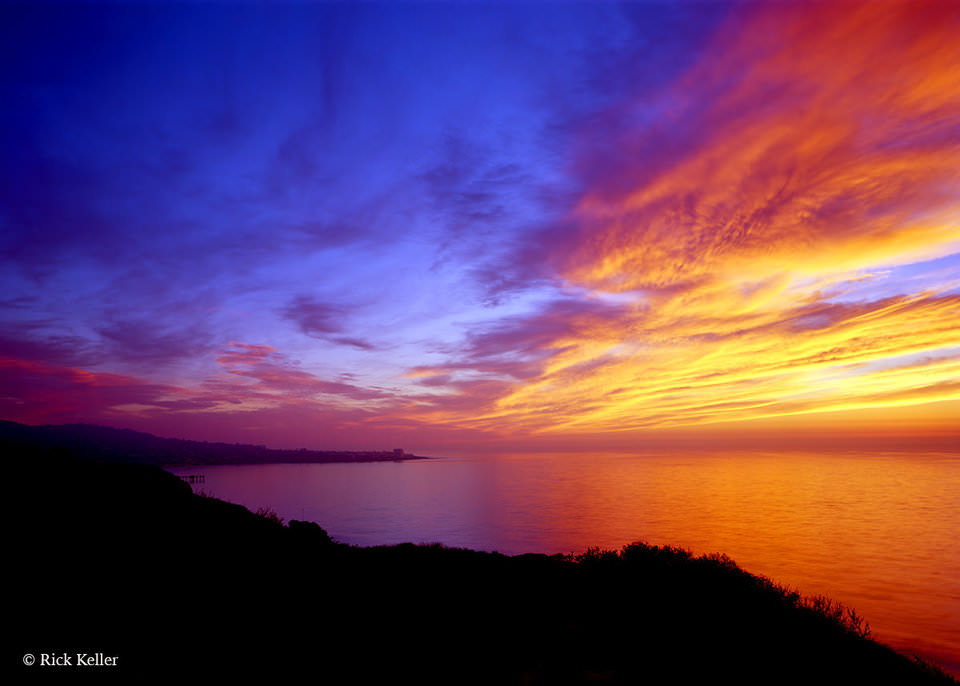
For those scenic photographers who use film, one need not always use color slide film to capture vivid colors. Here, I chose to use color negative film, Kodak Ektar, which is capable of producing comparably vibrant and saturated colors with a delightful color palette. On another technical note, in order to fulfill my visualization for the scene, I used a ‘color compensating’ magenta filter to accentuate magentas that would have materialized during the spectacular light display.
If the light and cloud conditions are aligned, the potential exists for the photographer to create interesting abstract photos whereby light and clouds intersect to create unusual patterns that may captivate the imagination of the viewer. Consider this next image, made along coastal San Diego, CA in the winter. The scene was surreal and reminded me of celestial phenomena, such as a nebula, or perhaps a remnant of a distant and ancient supernova, stretching light-years across . . .
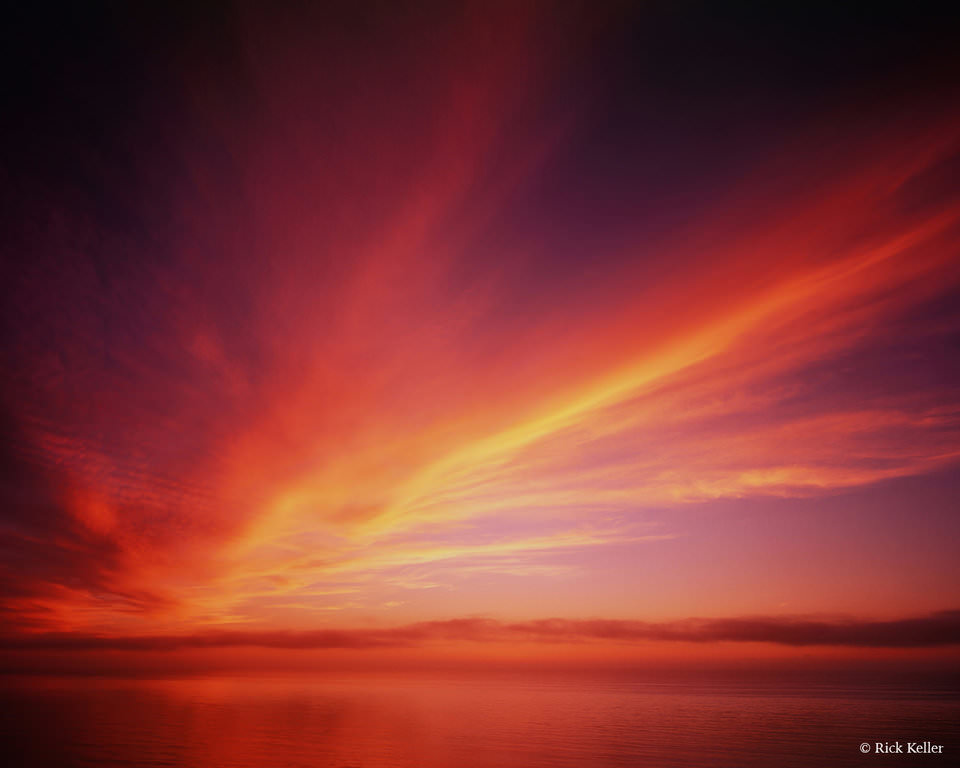
For the following image, with my mood and vision deeply in search of an abstract, I used a long lens to assist me in crafting a composition that would translate my artist vision into reality. On this particular winter evening, long after the sun had melted into the ocean, I studied the light burst at the horizon until I saw that for which I had been searching. Something deeper than light, shadow, or physical color. I saw and felt the juxtaposition of two contrasting worlds and emotions – a firefall and a waterfall coexisting in peace and harmony. It was uncanny. I saw the subtle movement in the clouds and interpreted it as a subtle flow of fire and water in distinct columns, and with that I felt a flow of emotion . . . At the decisive moment the shutter was opened and the light and the emotion gave way to the artist’s rendition.
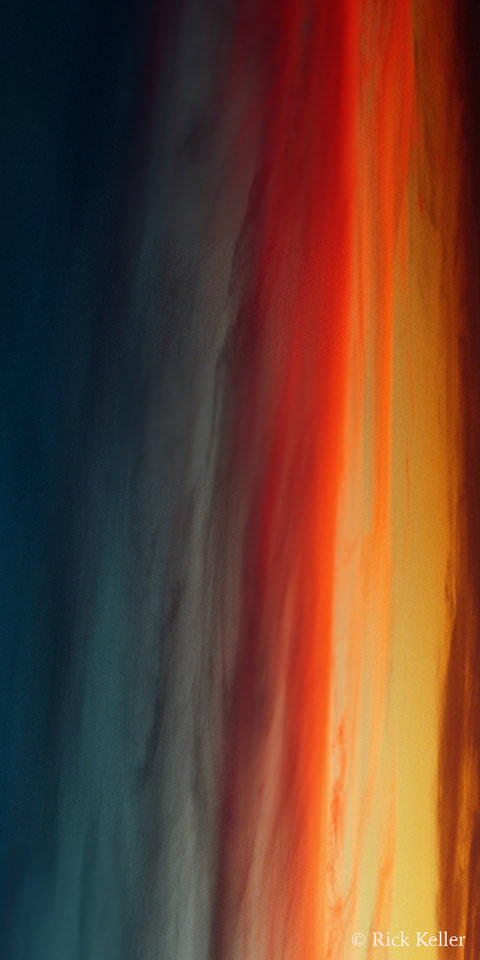
Finally, while the photographer may be obsessed with the glory that may be unfolding in front of the lens at the Second Sunset, it would be wise to occasionally look behind you, as another beautiful light display and composition may be evolving . . .
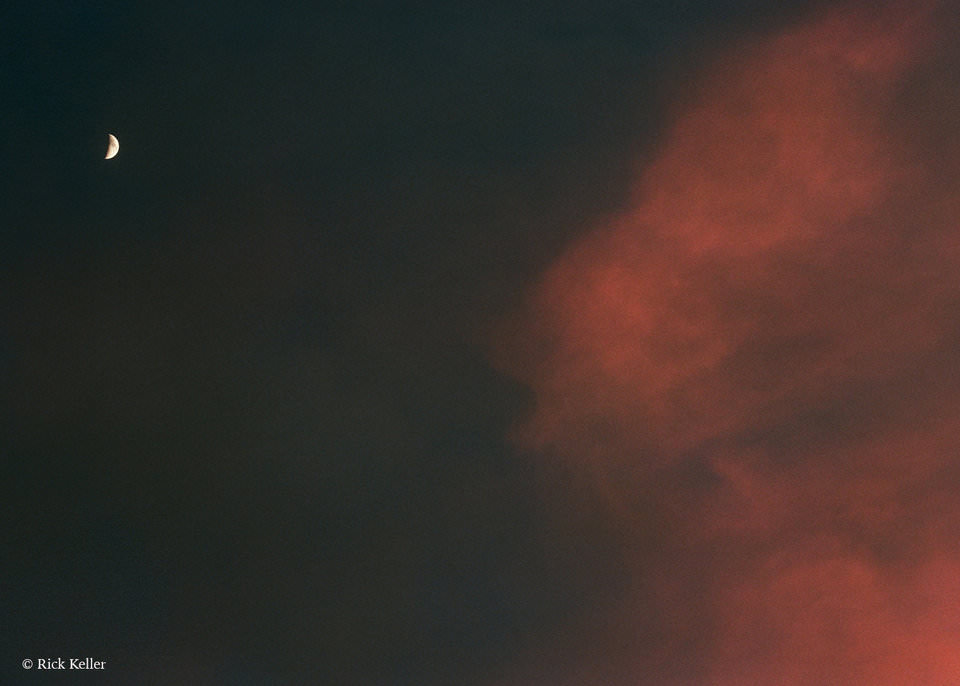
Conclusions
The light of the Second Sunset represents a special quality of light that has been cherished by photographers and visual artists alike to create beautiful works of art. If the weather conditions are right, the vibrant colors and the strong backlighting can be manipulated in the visualization process to bring the viewer into the world as you saw and felt it. With unlimited variations of the intersections of light, sky, sea, and land, the potential for creating dramatic and unique images that capture your vision is also unlimited. Of course, there is no guarantee that Nature will deliver the goods on this quality of light; but if the physical elements, the artistic vision, and the emotion are aligned in harmony, then your patience and determination will eventually reward you. So, my fellow artists and photographers, why don’t you stay out a little longer at sunset? Be patient. Don’t worry about being late for dinner. And keep going out! The light of the Second Sunset is out there waiting for you.
Do you also have a passion for and are inspired by the light and emotion of the Second Sunset? If so, please leave your thoughts on your experiences below in the comments section. Do you have images that capture your personal rendition and interpretation of this light? If so, we would love to see your work posted in our Photography Life Landscape Forum.
Special thanks to Dan Ballard, Talha Najeeb, and Nica Fieger for their beautiful contributions to this article. And once again, special thanks to Northcoast Photographic Services for the film development services for my contributions. Great job, Bonnie & Scott!
All of these photographs are copyright protected. All rights reserved. You may not copy, download, save, or reproduce these images without the expressed written consent of the contributors.